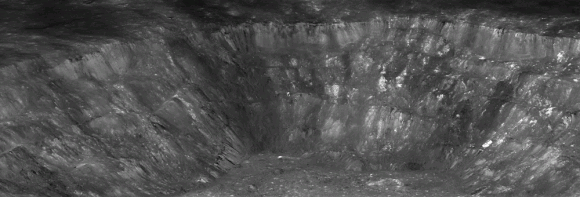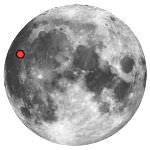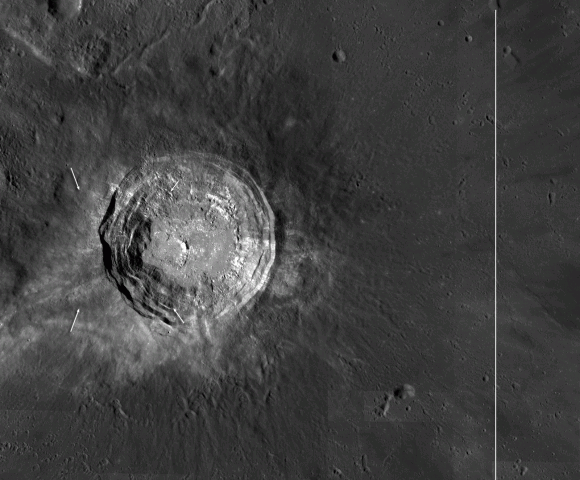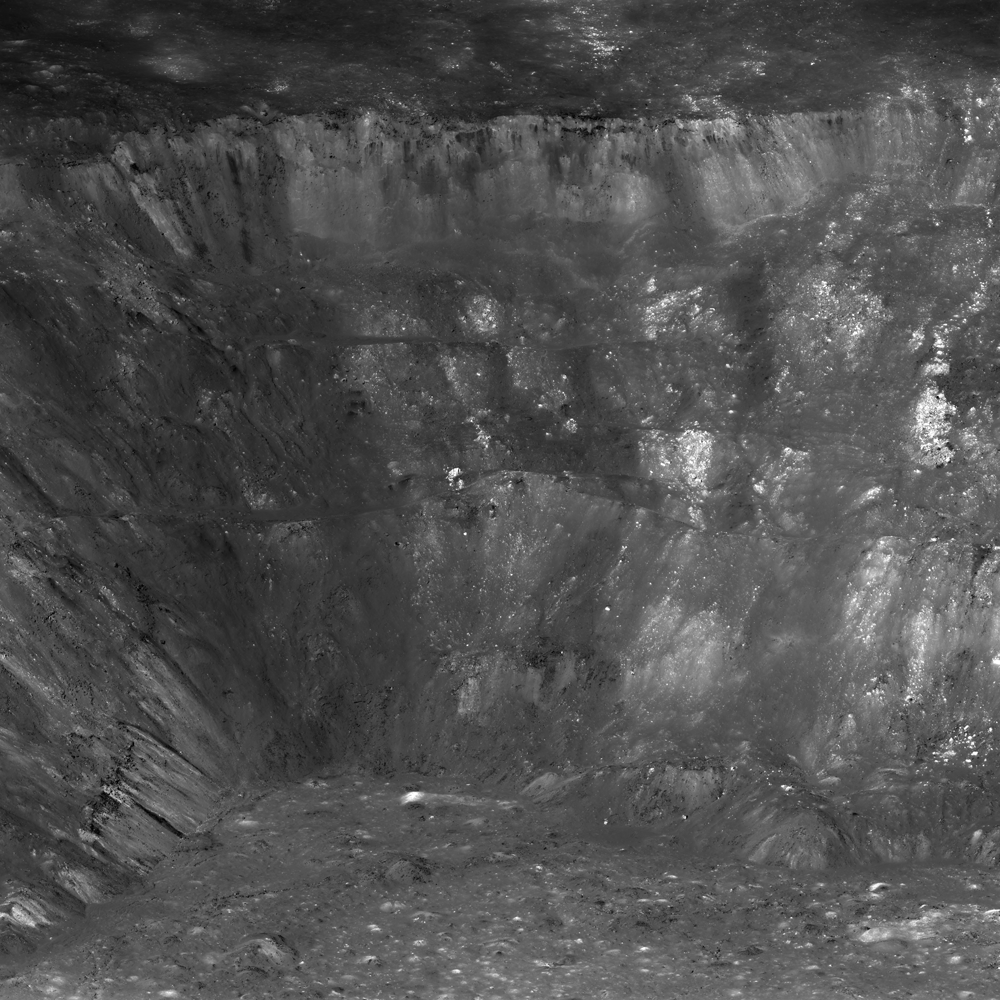[/caption]
Have you ever you looked up at the bright, cavernous Aristarchus Crater on the Moon through a telescope or binoculars and wondered what it would be like to stand on the rim and peer inside? Spectacular new views from the Lunar Reconnaissance Orbiter is almost as good as being there, and a new video lets you “rappel” down and take a closer look at the west side of the crater walls.

LRO Camera Principal Investigator Mark Robinson describes the region around the crater, known as the Aristarchus plateau, as one of the most geologically diverse places on the Moon. “A mysterious raised flat plateau, a giant rille carved by enormous outpourings of lava, fields of explosive volcanic ash, and all surrounded by massive flood basalts,” Robinson wrote on the LROC website. “A relatively recent asteroid (or comet) slammed into this geologic wonderland, blowing a giant hole in the ground revealing a cross section of over 3,000 meters (9,800 ft) of geology. No wonder planners for the Apollo missions put this plateau high on its list of targets for human exploration.”
These new amazing images were acquired on November 10, 2011 as LRO passed only 26 km (16.2 miles) above the surface, which is about two times lower than normal, due to LRO’s current elliptical orbit. The spacecraft was slewed to the west for an oblique or “sideways” look at the crater, instead of looking straight down as LRO normally does, to provide this unique perspective on Aristarchus. For a sense of scale, Robinson said that altitude is only a little over twice as high as commercial jets fly above the Earth. This crater is only one-tenth the size of Earth’s Grand Canyon, but the views from up above are similarly spectacular.

Aristarchus crater is located on the southeast edge of the Aristarchus Plateau. This yawning crater is 40 km wide and 3.5 km deep. The edges appear scalloped, almost like it crater was strip-mined. Since the crater is relatively young, Aristarchus is one of the brightest regions on the Moon. Robinson says these bright rocks may be anorthositic like the highlands, or they may be a more silicic rock like granite — or both.
“Although granites have been found in Apollo rock samples, the formation of granite on the Moon is not well understood at this time – another reason why we need to get samples from this region,” he said.

From this ‘straight down’ view, you can see the bright ejecta, contrasted by darker areas, which reflects the compositional difference between the various rocks in the region.
On the floor of Aristarchus crater is a wide variety of lunar rocks and geologic processes.
“Diverse materials such as dark, multilayered mare basalts in the walls, bright crustal rocks in the central peak, impact melt, and even regional pyroclastic materials blanketing the crater are brought to the floor and accumulated through mass wasting, creating a bountiful trove of geologic materials,” Robinson said.
Who’s ready to go exploring?!
Click here to see the full-resolution panoramic view of Aristarchus Crater.
Source: LROC
Hat tip and inspiration from Stu Atkinson

